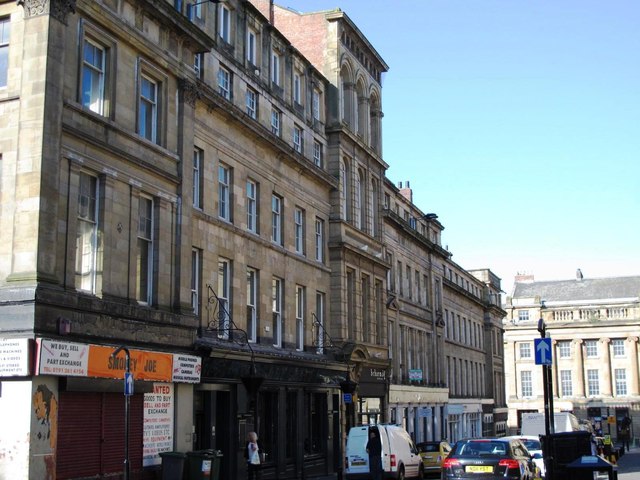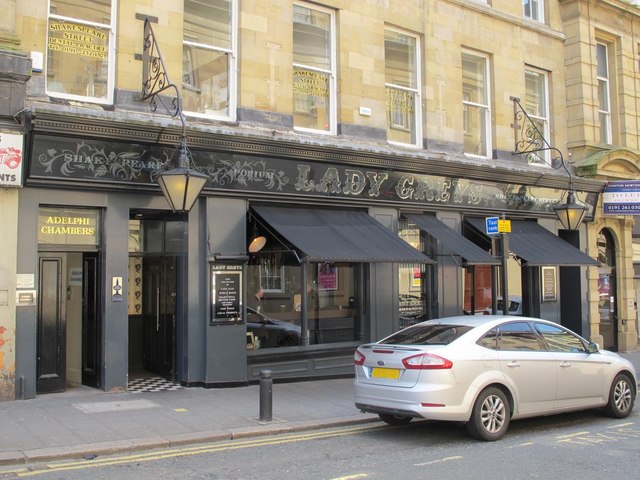2-26 Shakespeare Street, NE1

-
Description
"Probably by Walker and Wardle for Richard Grainger, c 1836. The street was so named because it is near the Theatre Royal, Grey Street / Shakespeare Street, NE1. Originally both sides of the street contained houses above shops, but after the theatre fire of 1899, the houses and shops along most of the north side were incorporated by Matcham into the refurbished theatre. The pattern of the design on the south side follows the standard wing-link-pavilion-link-wing arrangement. The two links, each nine windows wide (ie three houses) were plain and separated by a grand pavilion. Unfortunately, in 1894 the owners of the Masonic Temple in Pilgrim Street broke through the facade with an inappropriate three bay section just to the left of the central pavilion; the bay's four storeys are all much taller than Grainger's. The overall effect is to completely destroy the symmetry of the street. Nos.2-12 and 14 are (separately) Grade II listed LinkExternal link and LinkExternal link . No.16 is included in the Grade II listing for 54-56 Pilgrim Street, NE1." Photo by Mike Quinn, 2014, and licensed for reuse under a Creative Commons Licence. -
Owner
Geograph.org.uk -
Source
Geograph (Geograph) -
License
What does this mean? Attribution-ShareAlike 2.0 Generic (CC BY-SA 2.0)
-
Further information
Link: http://www.geograph.org.uk/photo/4413187
Resource type: Text/Website
Added by: Peter Smith
Last modified: 10 years ago
Viewed: 1019 times
Picture Taken: Unknown -
Co-Curate tags







